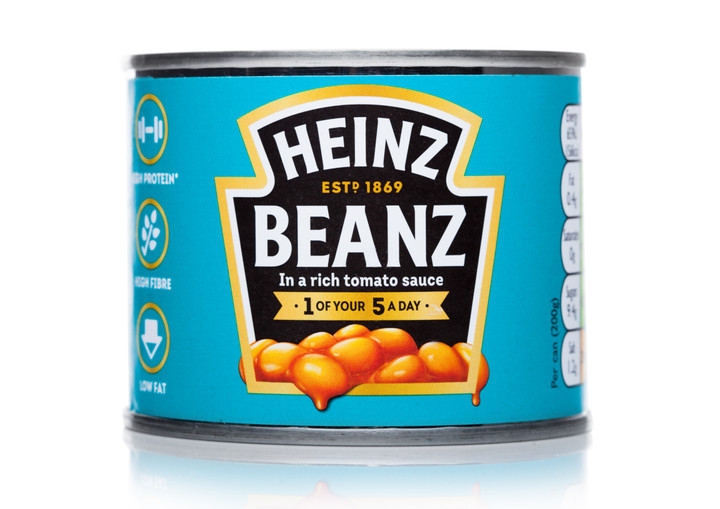What is matched betting? Your comprehensive guide
Matched betting is a betting strategy where the player places two bets, and utilises bookmaker free bet offers, to ensure a profit, no matter the result of the bet.
The system is legal, although some aspects of it may go against bookmaker terms and conditions.
Check out the best UK bookmakers to claim free bets worth up to £850!
It is also guaranteed to win when executed properly, but bettors need to ensure they do extensive research and double-check their bet details before placing them.
It can be restricted by bonus terms and conditions, however, and while some bookies do offer free bets and other viable bonuses to existing players, most are reserved for new account holders, which can limit the strategy’s money-making potential.
In this guide, we look at the matched betting strategy. You can find details on how to use it to make money, the research you need to undertake, and how to avoid potential mistakes and mishaps.
What is matched betting?
Although it’s described as a betting system or betting strategy, matched betting is more of a leveraging system. Players leverage offers provided by bookmakers to make a guaranteed return.
READ: UK free bets in 2025 – how to maximise your sports bonus
As long as bets placed meet some fairly basic criteria, and the player does thorough research, the strategy will make money. It is possible to make several hundred pounds when you start using the strategy, with ongoing opportunities to make some extra money each month.
Back bets and lay bets
One of the key aspects of matched betting is using two types of bets – back bets and lay bets. The bettor places these bets on different websites and because these two bets cover all possible outcomes of a particular event, the player is guaranteed returns.
Under normal circumstances, the disparity between back and lay bets means there is still some risk of making a loss when placing both bets but using free bets and bonus bets eliminates this risk and ensures a profit on every carefully chosen event.
Back bets
A back bet is what most people consider a normal or standard bet. It means that the bettor is betting on a specific outcome. For example, you might bet that Arsenal will win their next match.
Back bets are typically placed using traditional bookmakers and sportsbooks, and in matched betting, the back bets are those that are used to qualify for free bets, or using the free bets themselves.
Lay bets
Lay bets are usually only available through betting exchanges, where members bet against other members rather than bookmakers. When laying a bet, the bettor is predicting that an outcome won’t happen.
So, a lay bet on Arsenal winning means that you are betting Arsenal will either draw or lose the match but not win it. This element of the matched betting strategy is used to mitigate the risk associated with the back bet.
In the example of the Arsenal match, by backing and laying Arsenal, you have covered every possible outcome of the event. You will get returns no matter whether Arsenal wins, loses, or draws.
What you need to start matched betting
Matched betting has basic requirements, and most people should have everything they need to be able to start pretty much straight away. You will need the following:
A device with an internet connection
Players need to be able to access bookmaker and betting exchange websites.
This can be done via a computer, but most bookmakers now offer mobile apps, which are more convenient and still offer access to the same range of bets and markets.
A reliable Internet connection is also important to ensure that the player can place bets quickly.
Email address
To register with bookmakers and betting exchanges, users need an email address. When signing up, check the registration terms.
You might want to opt in to receive details of future bonuses and offers because these could provide details of further free bets and other bonuses in the future.
READ: Sports betting trends to watch out for in 2025
Some players set up separate email addresses for their betting accounts because it prevents their main email addresses from getting flooded with emails.
The email does need to be genuine, however, and you need to be able to access it because you will need to verify the address.
Bank account with funds
Although matched betting takes advantage of the free bets offered by bookmakers, these free bets are usually only available after you have deposited and placed initial bets. To do this, you will need to deposit real money into a betting account.
The money will be used to place your first bets, but you will make the money back and be able to withdraw it, typically within a few days.
Although some bookmakers may accept alternative payment methods, the vast majority of bookies accept bank payments, which means this payment method enables you to access more free bets and place more bets.
Official documents
Bookmakers must comply with various regulations and requirements to receive and retain their licenses. Chief among these regulations is the need to collect Know Your Customer (KYC) details from players.
They also want to reduce fraud and other crimes by verifying players’ identities. KYC details include name and address, and you will need to verify these details when setting up most accounts.
You will need a photo ID, such as a passport or driving license, and you may be required to provide proof of address identification, along with a photo of yourself. It’s best to have all this information to hand before you start.
How does matched betting work?
Once you’ve got everything ready, it’s time to start carefully researching and choosing appropriate matched bets.
Research your free bets
Bookmakers generally offer free bets as a means of attracting new players to their sites. Most free bet offers have some stipulations.
The most basic requirements are that the bettor must deposit and place initial bets of a certain value. In some cases, these bets must be placed on specific sports or potentially even on individual matches or events. It may also be necessary to choose bet lines with odds of above evens. Avoid free bets that have minimum wagering requirements because these are prohibitive.
Open a betting account
Once you’ve found a suitable free bet, open an account with that bookmaker. This will require the submission of personal details and, when you place your first deposit, financial details.
When starting with a matched betting strategy, it is a good idea to stick to one or two bookmaker offers, especially as some provide multiple free bets when you open accounts. Verify your account and your deposit method details to ensure you’re ready to place bets.
Ladbrokes, Coral, and bet365 are some of the most popular bookmakers that typically offer free bet bonuses.
Open a betting exchange account
To be able to lay your back bets, you will need to have a betting exchange account. Popular exchanges include Betfair, Smarkets, and Betdaq.
READ: Starting small: Why micro-stakes betting is perfect for beginners
Exchanges have the same registration requirements as bookmakers, so have your details and documents ready. Verify your registration so you’re ready to place bets.
Find your bet
If there are stipulations placed on the free bets, ensure you are looking at the right sports and events.
From there, you want events or markets that have limited outcomes. You should be betting on a team to win rather than betting on that team to be losing at half-time before staging a comeback in the second half. The odds should be above even, because most free bets are only available for odds of this level.
And, the lay bet should be readily available on your chosen exchange, to ensure you don’t lose out.
Place your back bet
Once you’ve chosen your market, it’s time to place your bet. Double-check to ensure that your initial bet qualifies you for a free bet and the bet qualifies for your own matched betting strategy.
Place the back bet, meeting bet size and other requirements, at your chosen bookmaker.
Lay the bet
Once the back bet is verified by the bookmaker, head to your exchange and lay that same bet. Ensure you are laying the bet and not backing it.
Also, ensure that the lay bet is met by other players. When laying bets on exchanges, you are essentially offering that bet to other players. If the bet isn’t matched, you get your stake back and it won’t work for matching betting strategies.
Collect your free bets
Whatever the result of the bet, as long as you met all the appropriate criteria and did your research before choosing the free bet offer, you will be entitled to free bets at your bookmaker.
Most automatically place the free bet in your account, but it can take a few days before they are deposited. In some cases, you may need to claim the bet, so ensure you follow the appropriate steps to receive your bet.
Place new bets using your free bets
Once you have your free bet, you need to repeat the process of backing a bet on the bookmaker site, but using your free bet, and laying it on the exchange using your money. And, as those bets conclude and you receive winnings in your account, you can withdraw the money and look for other bookmakers offering free bets.
You don’t need to set up new accounts with other betting exchanges, however, as you can continue to use the same one.
Withdraw your winnings
Once your free bets have concluded, and you have met any free bet requirements and stipulations, you can withdraw the money from your betting account to your bank account and start the process again.
Leaving the money on the bookmaker account can lead to you placing additional bets, but these won’t be part of your matched betting strategy and can lead to losses.
Free bets for existing customers
While most free bet offers are used to draw in new customers, bookmakers do offer these bonuses to existing customers as part of reload bonuses, or to encourage players to bet during specific events.
These work in much the same way as initial bet match offers. Players have to meet specific bet requirements and receive free bets in return.
It isn’t usually necessary to leave money in a bookmaker account to gain access to these offers, but it does mean the player needs to monitor bookmakers to find the most beneficial free bet offers available at any time.
Free bet terms and conditions
All free bets come with some requirements or stipulations. Some requirements may mean the free bets are not viable as part of a matched betting strategy. For example, free accumulator bets can make the strategy very complicated. In other cases, players must meet the requirements to receive the free bets.
Requirements can include:
- Bet size: Every free bet offer has some bet size requirement. For example, a bookmaker might offer a free £10 bet if you place a £10 real-money bet of your own. If you place a bet with a higher stake than this, you should still receive the free bet, but you will only ever receive a £10 free bet at the most. If your bet is lower than this value, you receive nothing.
- Time restraints: New player free bets often have time constraints that require you to place your bet within a specified period from setting up your account. Check whether the time limit relates to when the bet is placed or when the bet takes place.
- Sport or event restrictions: Some free bets can only be acquired if you place your initial bet on a specific sport, bet type, or even individual event. Similarly, the free bets you receive might have the same restrictions. These bets can still be used in matched betting, but you need to meet the requirements.
- Wagering requirements: Wagering requirements can be prohibitive, as they require you to wager your bonus amount a certain number of times before you can withdraw. For example, if a £10 free bet has a 3x wagering requirement, this means you must place bets with stakes of £30 or more before you can withdraw winnings. It is not usually possible to use bets with these restrictions as part of your matched betting plan.
The key to successful matched betting is careful research. Research the bookmaker offers, the bets you intend to place, and details of any future offers, as well as the events you intend to bet on. This helps avoid mistakes, which are the most common cause of matched betting strategy failure.
Responsible gambling with FIRST
You must be 18+ to gamble. Gambling is a form of entertainment, not a way to make money. Our tips and advice help you enjoy gambling, but there is always a chance a bet or casino game can lose.
Never bet more than you can afford to lose. Stop betting if you are angry, emotional or under the influence of alcohol.
Warning signs of problem gambling: chasing losses, betting money needed for bills, or feeling unable to stop.
Need help? Visit our responsible sports betting page or our responsible casino gambling page, or contact the support organisations listed below if you're struggling to control your gambling:






 Luck vs skill in gambling: finding the balance
Luck vs skill in gambling: finding the balance
 What is a sports betting strategy?
What is a sports betting strategy?
 What is a Heinz bet?
What is a Heinz bet?
